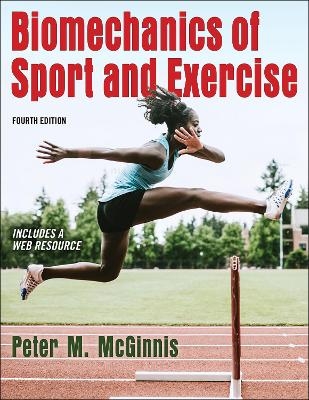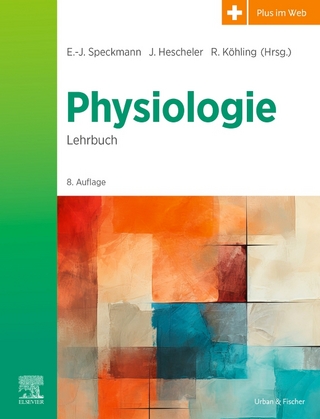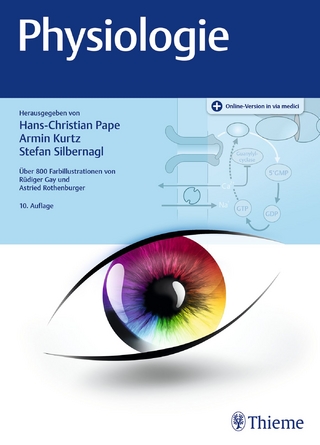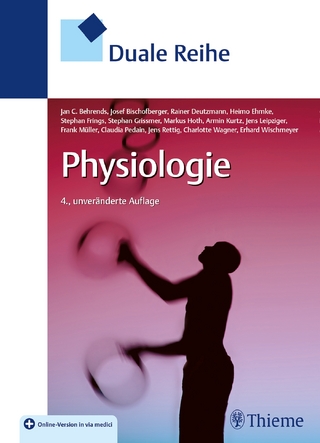
Biomechanics of Sport and Exercise
Human Kinetics (Verlag)
978-1-4925-7140-7 (ISBN)
A standout among introductory biomechanics texts, Biomechanics of Sport and Exercise, Fourth Edition With Web Resource, takes a unique approach to introducing exercise and sport biomechanics. Using simple terms, the book presents mechanics before functional anatomy, helping students first understand external forces and their effects on motion; then explores how the musculoskeletal system responds and generates its own internal forces to maintain position; and finally shows how to apply biomechanical principles to analyze movement and ultimately improve performance.
The fourth edition expands its commitment to enabling students to discover the principles of biomechanics through observation. Easy-to-understand experiments are presented for students to try in the classroom or on their own. Sample problem sidebars guide students through choosing the appropriate equation to determine the forces acting or motion occurring in a specific scenario and then helps them solve the equation. This practical approach—combining clear illustrations, sample calculations, and encouragement for active learning—helps students develop a deeper understanding of the underlying mechanical concepts.
In addition to careful updates throughout the book, other new enhancements in the fourth edition include the following:
New content explores the technologies and devices available to coaches, athletes, and the general public to measure aspects of athletes’ movements.
New full-color art and diagrams enhance the text and help students visualize mechanics in real-world scenarios.
Explanations of the equations used in the text make the content more accessible to students.
New concept application boxes provide deeper analysis of the field use of biomechanics, with topics such as the Magnus effect in baseball pitching, the wetsuit effect in triathlons, power output in cycling, centripetal acceleration when running a curve, and the work-energy principles in modern shot putting.
Other learning aids include bold key terms, chapter objectives, and a guide to key equations and abbreviations. The chapters include a total of 18 sample problems that students can solve using a step-by-step process. A companion web resource offers additional review questions and problem sets.
Biomechanics of Sport and Exercise, Fourth Edition, introduces the biomechanics of human movement in a clear and concise manner while promoting an active, engaged learning experience. Students will discover the principles of mechanics for themselves, resulting in a strong understanding of the subject matter.
Peter M. McGinnis, PhD, is a distinguished service professor in the kinesiology department at the State University of New York College at Cortland, where he has taught and coached pole vaulters since 1990. Before 1990, McGinnis was an assistant professor in the department of kinesiology at the University of Northern Colorado. During that time, he also served as a sport biomechanist in the Sports Science Division of the U.S. Olympic Committee in Colorado Springs, where he conducted applied sport biomechanics research, tested athletes, taught biomechanics courses to coaches, and developed educational materials for coaches. He has authored numerous articles and technical reports about the biomechanics of pole vaulting and has been a reviewer for Sports Biomechanics, Journal of Applied Biomechanics, Research Quarterly for Exercise and Sport, and Journal of Sports Sciences. McGinnis is a member of numerous professional organizations, including the American College of Sports Medicine, American Society of Biomechanics, International Society of Biomechanics, and ASTM International. He served as chair of the ASTM International pole vault equipment subcommittee for 12 years. He is also a member of USA Track and Field’s Sports Medicine and Science Committee, serving as the biomechanist for the pole vault. In 2012 USA Track and Field honored him with the Dr. C. Harmon Brown Sports Medicine and Science Award. McGinnis received a PhD in physical education from the University of Illinois in 1984 and a BS in engineering from Swarthmore College in 1976. He was inducted into the Swarthmore College Garnet Athletics Hall of Fame in 2014.
Introduction. Why Study Biomechanics?
What Is Biomechanics?
What Are the Goals of Sport and Exercise Biomechanics?
The History of Sport Biomechanics
The Organization of Mechanics
Basic Dimensions and Units of Measurement Used in Mechanics
Summary
Part I. External Biomechanics: External Forces and Their Effects on the Body and Its Movement
Chapter 1. Forces: Maintaining Equilibrium or Changing Motion
What Are Forces?
Classifying Forces
Friction
Addition of Forces: Force Composition
Resolution of Forces
Static Equilibrium
Summary
Chapter 2. Linear Kinematics: Describing Objects in Linear Motion
Motion
Linear Kinematics
Uniform Acceleration and Projectile Motion
Summary
Chapter 3. Linear Kinetics: Explaining the Causes of Linear Motion
Newton’s First Law of Motion: Law of Inertia
Conservation of Momentum
Newton’s Second Law of Motion: Law of Acceleration
Impulse and Momentum
Newton’s Third Law of Motion: Law of Action-Reaction
Newton’s Law of Universal Gravitation
Summary
Chapter 4. Work, Power, and Energy: Explaining the Causes of Motion Without Newton
Work
Energy
The Work–Energy Principle
Power
Summary
Chapter 5. Torques and Moments of Force: Maintaining Equilibrium or Changing Angular Motion
What Are Torques?
Forces and Torques in Equilibrium
What Is Center of Gravity?
Summary
Chapter 6. Angular Kinematics: Describing Objects in Angular Motion
Angular Position and Displacement
Angular and Linear Displacement
Angular Velocity
Angular and Linear Velocity
Angular Acceleration
Angular and Linear Acceleration
Anatomical System for Describing Limb Movements
Summary
Chapter 7. Angular Kinetics: Explaining the Causes of Angular Motion
Angular Inertia
Angular Momentum
Angular Interpretation of Newton’s First Law of Motion
Angular Interpretation of Newton’s Second Law of Motion
Angular Impulse and Angular Momentum
Angular Interpretation of Newton’s Third Law of Motion
Summary
Chapter 8. Fluid Mechanics: The Effects of Water and Air
Buoyant Force: Force Due to Immersion
Dynamic Fluid Force: Force Due to Relative Motion
Summary
Part II. Internal Biomechanics: Internal Forces and Their Effects on the Body and Its Movement
Chapter 9. Mechanics of Biological Materials: Stresses and Strains on the Body
Stress
Strain
Mechanical Properties of Materials: The Stress–Strain Relationship
Mechanical Properties of the Musculoskeletal System
Summary
Chapter 10. The Skeletal System: The Rigid Framework of the Body
Bones
Joints
Summary
Chapter 11. The Muscular System: The Motors of the Body
The Structure of Skeletal Muscle
Muscle Action
Muscle Contraction Force
Summary
Chapter 12. The Nervous System: Control of the Musculoskeletal System
The Nervous System and the Neuron
The Motor Unit
Receptors and Reflexes
Summary
Part III. Applying Biomechanical Principles
Chapter 13. Qualitative Biomechanical Analysis to Improve Technique
Types of Biomechanical Analysis
Steps of a Qualitative Biomechanical Analysis
Sample Analyses
Summary
Chapter 14. Qualitative Biomechanical Analysis to Improve Training
Biomechanics and Training
Qualitative Anatomical Analysis Method
Sample Analyses
Summary
Chapter 15. Qualitative Biomechanical Analysis to Understand Injury Development
Mechanical Stress and Injury
Tissue Response to Stress
Mechanism of Overuse Injury
Individual Differences in Tissue Threshold
Intrinsic and Extrinsic Factors Affecting Injury
Sample Analysis: Overuse Injuries in Running
Summary
Chapter 16. Technology in Biomechanics
Quantitative Biomechanical Analysis
Measurement Issues
Tools for Measuring Biomechanical Variables
Summary
| Erscheinungsdatum | 16.01.2020 |
|---|---|
| Verlagsort | Champaign, IL |
| Sprache | englisch |
| Maße | 216 x 279 mm |
| Gewicht | 1134 g |
| Themenwelt | Studium ► 1. Studienabschnitt (Vorklinik) ► Physiologie |
| ISBN-10 | 1-4925-7140-7 / 1492571407 |
| ISBN-13 | 978-1-4925-7140-7 / 9781492571407 |
| Zustand | Neuware |
| Informationen gemäß Produktsicherheitsverordnung (GPSR) | |
| Haben Sie eine Frage zum Produkt? |
aus dem Bereich


